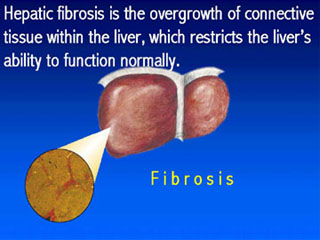 Below is a publication from “Healio Hepatology, February 21, 2013 – HbsAg Levels Linked with Fibrosis in HBeAg-Positive Patients” , showing the correlation between HBsAg and HBV DNV virus levels and the risk of moderate to severe fibrosis in HBeAg positive patients.
Below is a publication from “Healio Hepatology, February 21, 2013 – HbsAg Levels Linked with Fibrosis in HBeAg-Positive Patients” , showing the correlation between HBsAg and HBV DNV virus levels and the risk of moderate to severe fibrosis in HBeAg positive patients.
Patients with hepatitis B who tested positive for hepatitis B e antigen were at increased risk for moderate-to-severe fibrosis with lower levels of hepatitis B surface antigen in a recent study.
Researchers evaluated serum samples and liver biopsy results from 406 treatment-naive patients with chronic hepatitis B. HBV genotype and hepatitis B e antigen (HBeAg) status were recorded along with levels of HBV DNA and hepatitis B surface antigen (HBsAg).
HBeAg-positive patients (n=101) had a higher mean fibrosis stage than HBeAg-negative patients (1.86 ± 1.18 vs. 1.40 ± 0.99; P<.001) and had greater levels of HBV DNA (7.06 ± 1.71 vs. 4.12 ± 1.67)and HBsAg (4.24 ± 0.9 vs. 3.53 ± 0.92) (P<.0001 for both). Investigators observed strong correlations between HBV DNA and HBsAg levels (r=0.44; P<.0001) and between fibrosis severity and HBsAg levels (r=0.43; P<.0001) among HBeAg-positive patients, but not among HBeAg-negative participants.
HBeAg-positive patients with moderate-to-severe fibrosis had lower HBsAg (3.84 ± 1.01 vs. 4.63 ± 0.58; P<.0001)and HBV DNA levels (6.47 ± 1.81 vs. 7.62 ± 1.40; P<.001) than those with mild or no fibrosis. HBeAg-positive patients with genotypes B, D or E had significantly higher HBsAg levels than HBeAg-negative patients, along with higher HBV DNA levels regardless of genotype.
Modeling analysis established an HBsAg cutoff of 3.85 log IU/mL-1 with a theoretical sensitivity of 100%, specificity of 86% and NPV of 100% for predicting moderate-to-severe fibrosis among HBeAg-positive patients with genotypes B or C. Investigators noted that the small cohort size used to establish this cutoff requires further validation to be clinically useful.
“To our knowledge, the current study is only the second to associate an HBsAg cutoff with the prediction of fibrosis severity in CHB patients,” the researchers wrote. “It will be of considerable interest to see whether the serum HBsAg and HBV DNA levels in the patients infected with different genotypes are significantly different from the mean values of the overall HBeAg-positive group, and if they will require the development of genotype-specific cutoffs, or whether a single cutoff is applicable to all HBV genotypes.”
Disclosure: See the study for a full list of relevant disclosures.

